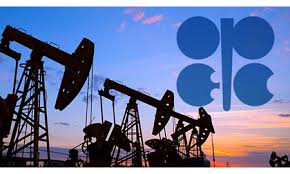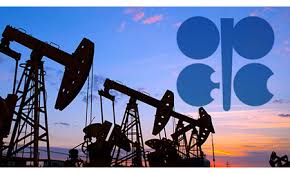
As delegates of OPEC members said talks on assigning quotas to individual countries made good progress, oil traders and analysts grew more confident that OPEC will reach a deal to curb global oversupply next week.
As he left the group’s headquarters in Vienna on Monday evening, Libyan OPEC Governor Mohamed Oun said that today’s discussions went well. Meetings are also scheduled to continue for another day. The meeting is a warm-up for a full OPEC meeting next week.
While analysts warned that a failure to agree on a cut could lead to a deepening supply glut by early 2017, oil prices rose to their highest level since October on Tuesday as the market priced in an expected output cut led by producer cartel OPEC.
Before dipping back to $49.22 per barrel at 0735 GMT, still up 32 cents, or 0.65 percent, International Brent crude oil futures rose as high as $49.63 a barrel on Tuesday, up 1.5 percent from the last settlement and the highest since Oct. 31.
While non-OPEC producer Russia to agree on a coordinated production cut to prop up the market by bringing production into line with consumption, the Organization of the Petroleum Exporting Countries (OPEC) is trying by Nov. 30 to bring its 14 member states.
"With investors becoming more optimistic about OPEC reaching an agreement on production cuts, oil prices should continue to edge higher," ANZ bank said on Tuesday.
"The single most important country in OPEC, Saudi Arabia, wants it (a production cut)... OPEC's leadership is cognizant of the risks posed by failing to reach a deal," RBC Capital Markets said on Tuesday in a note to clients.
"Another fall in oil prices could plunge the (Saudi) Kingdom further into the red, imperil key initiatives (e.g., Aramco IPO), and raise the prospect of higher borrowing costs," it added.
Goldman Sachs said in a note to clients that the supply and demand fundamentals, "have weakened sharply since OPEC announced a tentative agreement to cut production,” and noted that the chances of an OPEC cut had increased as producers needed to react to eroding supply and demand.
Goldman said it expected an oil supply surplus of 0.7 million barrels per day (bpd) for the first quarter of 2017 should OPEC and other producers, especially Russia, fail to agree a cutback.
“With greater confidence that the global oil market can finally shift into deficit later next year, we now believe that there is a strong rationale for low-cost producers to deliver a swift production cut to normalize inventories,” analysts including Damien Courvalin said in a research note.
Proposals to limiting the 14-member group’s output to a collective 32.5 million to 33 million barrels a day were made in September by the OPEC. This cut would be its first cut in eight years.
However there are hurdles to a firm deal. While Iraq has contested OPEC’s production estimates, Iran has sought special treatment since it’s newly free of international sanctions.
According to Goldman Sachs, since the Algiers meeting in September, the urgency for a deal has grown even stronger. According to the bank’s research note, unless OPEC acts, the current glut will increase to about 700,000 barrels a day in the first three months of next year unless OPEC acts and “oil fundamentals have weakened sharply since OPEC announced a tentative agreement”. The note said that with other members keeping output steady at current levels through the first half of 2017, any cut would have to come primarily from Saudi Arabia, Kuwait, the United Arab Emirates and Qatar.
(Source:www,reuters.com & www.cnbc.com)
As he left the group’s headquarters in Vienna on Monday evening, Libyan OPEC Governor Mohamed Oun said that today’s discussions went well. Meetings are also scheduled to continue for another day. The meeting is a warm-up for a full OPEC meeting next week.
While analysts warned that a failure to agree on a cut could lead to a deepening supply glut by early 2017, oil prices rose to their highest level since October on Tuesday as the market priced in an expected output cut led by producer cartel OPEC.
Before dipping back to $49.22 per barrel at 0735 GMT, still up 32 cents, or 0.65 percent, International Brent crude oil futures rose as high as $49.63 a barrel on Tuesday, up 1.5 percent from the last settlement and the highest since Oct. 31.
While non-OPEC producer Russia to agree on a coordinated production cut to prop up the market by bringing production into line with consumption, the Organization of the Petroleum Exporting Countries (OPEC) is trying by Nov. 30 to bring its 14 member states.
"With investors becoming more optimistic about OPEC reaching an agreement on production cuts, oil prices should continue to edge higher," ANZ bank said on Tuesday.
"The single most important country in OPEC, Saudi Arabia, wants it (a production cut)... OPEC's leadership is cognizant of the risks posed by failing to reach a deal," RBC Capital Markets said on Tuesday in a note to clients.
"Another fall in oil prices could plunge the (Saudi) Kingdom further into the red, imperil key initiatives (e.g., Aramco IPO), and raise the prospect of higher borrowing costs," it added.
Goldman Sachs said in a note to clients that the supply and demand fundamentals, "have weakened sharply since OPEC announced a tentative agreement to cut production,” and noted that the chances of an OPEC cut had increased as producers needed to react to eroding supply and demand.
Goldman said it expected an oil supply surplus of 0.7 million barrels per day (bpd) for the first quarter of 2017 should OPEC and other producers, especially Russia, fail to agree a cutback.
“With greater confidence that the global oil market can finally shift into deficit later next year, we now believe that there is a strong rationale for low-cost producers to deliver a swift production cut to normalize inventories,” analysts including Damien Courvalin said in a research note.
Proposals to limiting the 14-member group’s output to a collective 32.5 million to 33 million barrels a day were made in September by the OPEC. This cut would be its first cut in eight years.
However there are hurdles to a firm deal. While Iraq has contested OPEC’s production estimates, Iran has sought special treatment since it’s newly free of international sanctions.
According to Goldman Sachs, since the Algiers meeting in September, the urgency for a deal has grown even stronger. According to the bank’s research note, unless OPEC acts, the current glut will increase to about 700,000 barrels a day in the first three months of next year unless OPEC acts and “oil fundamentals have weakened sharply since OPEC announced a tentative agreement”. The note said that with other members keeping output steady at current levels through the first half of 2017, any cut would have to come primarily from Saudi Arabia, Kuwait, the United Arab Emirates and Qatar.
(Source:www,reuters.com & www.cnbc.com)














